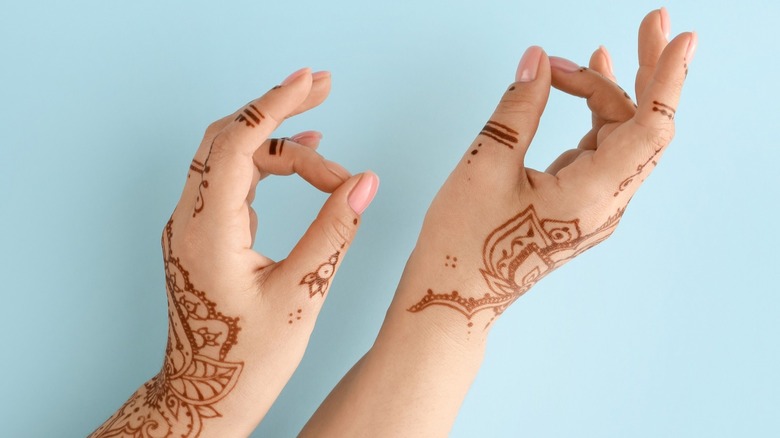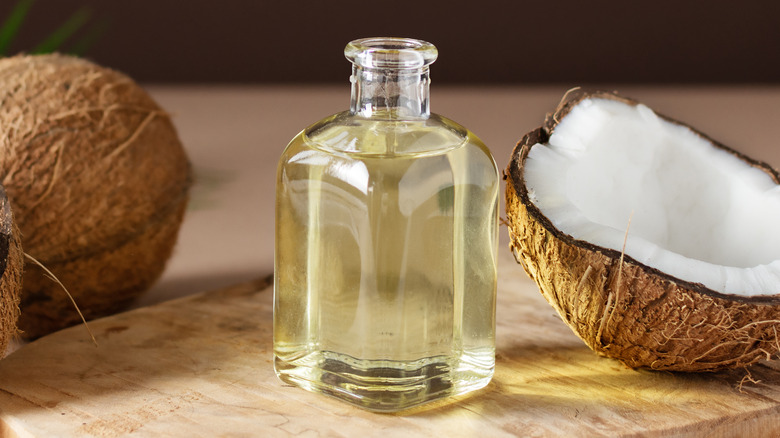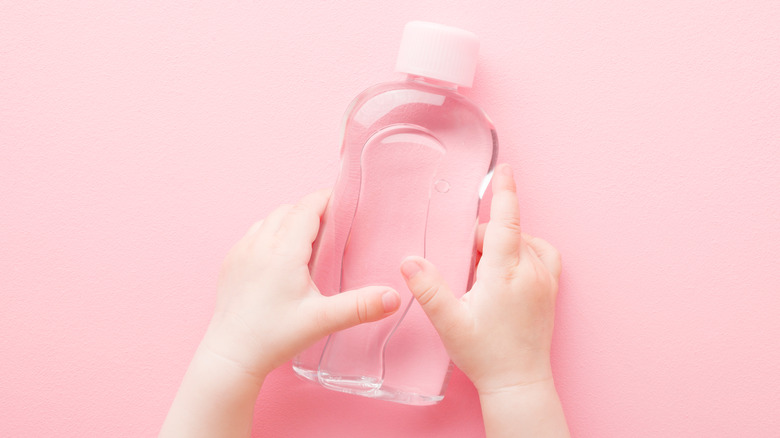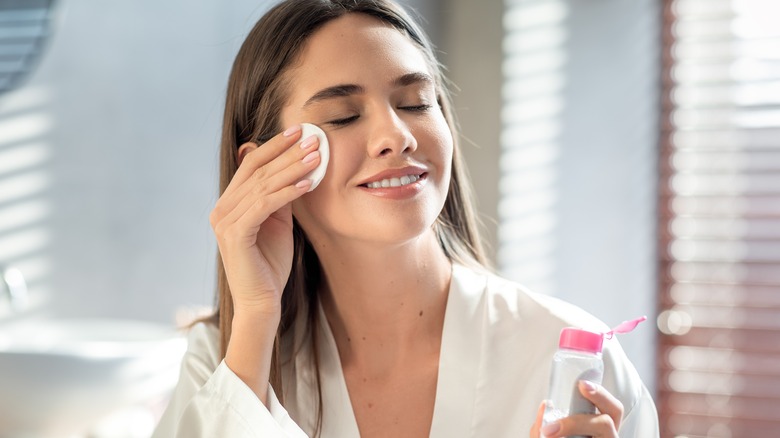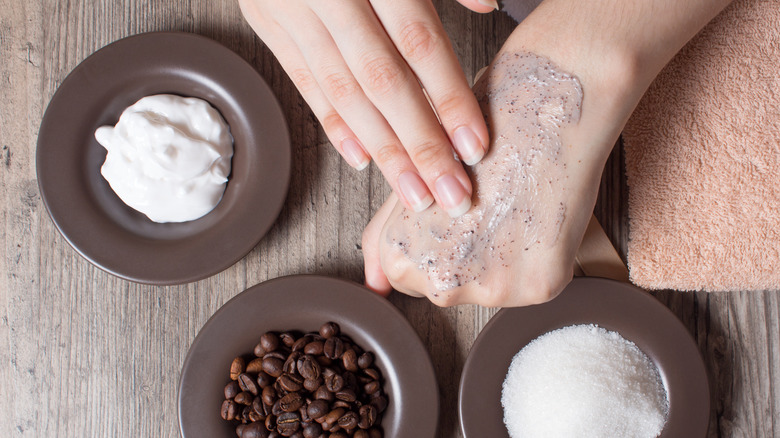Here Are The Best Methods For Removing Henna Dye From Your Skin
Looking for a free-spirited way to express your creativity on your skin or an all-natural method to give your hair a new shade? Then your first thought might go to henna.
Henna is a natural pigment often used to dye hair or create intricate temporary tattoos. Once used medicinally, henna designs became traditional in cultural celebrations from India to the Middle East, and are often applied for events such as weddings or birthdays (via St. Thomas University). Henna has now garnered mainstream popularity, as well, and is a staple of the boho look beloved by festival-goers. We've even seen the rise and fall of henna tattoo freckles as a beauty fad.
But as gorgeous as henna designs can be, they can also be tricky to remove in a hurry. "There is no solution for removing all of the pigment from the dye all at once," dermatologist Marie Hayag tells Byrdie. But henna will fade on its own, usually over the course of two to six weeks, and Hayag points out that the natural fading of henna can be sped up.
So, what do you do when you want that henna stain gone sooner rather than later? First off, don't attack the design with harsh cleansers like bleach, which can be extremely damaging to the skin and even cause chemical burns (via Burn and Reconstructive Centers of America). Instead, here are a few skin-friendly methods to help remove henna dye faster.
Coconut oil
Is there anything coconut oil can't do? This fan-favorite of DIY remedies and beauty treatments seems to have 1001 benefits. And it turns out, we can add safe henna removal to that list. As recommended by the experts at The Henna Guys, coconut oil can be used to fade henna stains without harming or drying out your skin. They suggest you apply a little coconut oil directly to the design and sprinkle the area with sugar, then gently rub to enjoy the effects of this instant sugar scrub. Finally, use a damp cloth to wipe away any remaining sugar and oil.
However, The Henna Guys do caution against using coconut oil on your face or any other skin areas prone to acne, as it may clog pores and contribute to breakouts.
Baby oil
Baby oil offers another gentle way to start dissolving henna pigments on the double. As Medical News Today suggests, you can simply add three capfuls of baby oil to warm bathwater the next time you're practicing some self-care. Soak for at least 20 minutes to let the oil work its magic, then rinse well. Pro tip: You may want to wash the oil away in the spray of your shower to fully get rid of any greasy residue.
Or, if you'd rather not give your full body the oil treatment, you can apply baby oil directly to your henna stain using a cotton ball. Leave the oil in place for a while — again, 20 minutes should do the trick — before washing it off.
Micellar water
The same micellar water you use to cleanse your face of makeup each night can also help you encourage the fading of a stubborn henna tattoo. According to Healthline, micellar water bonds with henna dye in your skin, lifting it away from the design. Noted to be gentle on the skin, this is a great option for people with sensitive skin types. To get the best results with your micellar water, soak the henna design thoroughly and give it a little time to absorb. Then rub the skin dry, using light pressure to help fade the stain.
Gentle exfoliation
As The Boston Globe reports, the reason that henna designs last so long is that they penetrate into your skin's top layer, the epidermis, and won't disappear until all those skin layers have worn away (via Boston.com). However, you can speed up this natural shedding process with a little safe and gentle exfoliation.
The whole point of exfoliation is to slough away dead skin cells and reveal new layers underneath. When trying to remove henna stains from your body, Saved Tattoo says you can use your favorite physical exfoliant, such as a sugar or salt scrub. But if trying to fade stains on your face — for example, around your hairline after dying your locks with henna — it's best to use cleansers and exfoliants specifically formulated for your face's more delicate complexion. If you're not sure what kind of exfoliation to try, consider finding ways to properly exfoliate according to your skin type.
Swimming
When you're trying to preserve a henna design for as long as possible, taking a dip in the swimming pool can be a big no-no. But if you're trying to fade henna, instead, then splashing around in chlorinated water may be a useful hack. As the henna pros at Artistic Adornment explain, chlorine can bleach your design. Plus, it can also halt oxidation and prevent the proper development of a freshly applied henna tattoo. So if you're having immediate buyer's remorse, swimming in chlorine may stop new henna in its tracks.
No pool? No problem. Artistic Adornment also reveals that seawater can fade henna quickly, as the saltwater provides natural exfoliation. So ditching that henna stain may be a great excuse to hit the beach.
